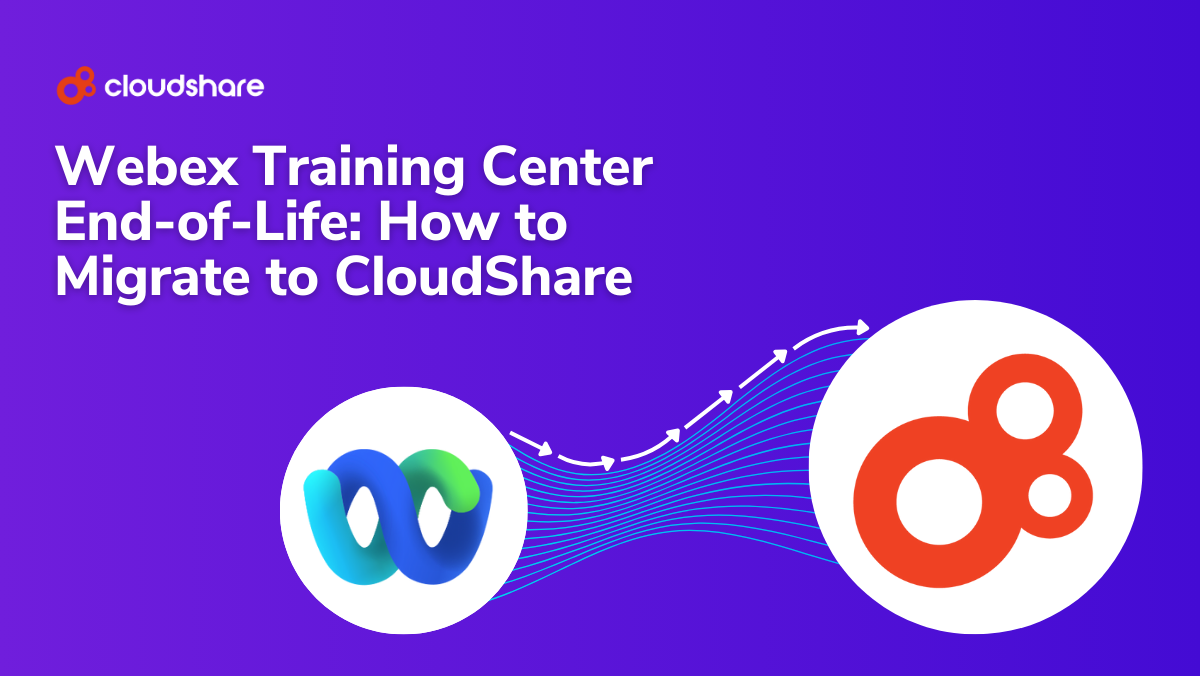Glossary
Virtual Instructor-led Training (VILT)
Virtual instructor-led training, or VILT, is an online classroom where the student and instructor are in different locations and communicate entirely through the cloud. Through this simulated learning experience, students have the benefit of a hands-on learning experience that improves knowledge retention.
Recent improvements in internet bandwidth technology have made Virtual Instructor-Led Training (VILT) an increasingly attractive option for tech companies looking to train customers, partners and employees on new software solutions or on how to handle software-specific job scenarios and environments.
VILT is often more cost-effective and convenient than in-house labs that require expensive hardware and IT staff to maintain.
VILT has many uses, including software training, sales demos and POCs, and professional software development and sandboxing.
How is VILT used?
VILT stands for Virtual Instructor-Led Training, it is a type of online training that simulates the traditional classroom experience. VILT is used in a variety of ways, some examples include:
- Corporate training: Companies use VILT to train employees on various topics, such as product knowledge, soft skills, and compliance.
- Professional development: Professional organizations and educational institutions use VILT to provide continuing education and certification courses for their members and students.
- Product demos and webinars: Companies use VILT to provide product demos and webinars to potential customers, allowing them to learn about the features and benefits of a product or service before making a purchase.
- Remote learning: VILT is used in distance learning and e-learning programs, allowing students to attend classes remotely and interact with their instructors and classmates in real-time.
- Virtual classroom: VILT is used to provide classroom-like training in a virtual environment, allowing trainers to provide interactive and engaging learning experiences.
- Language learning: VILT is used to provide language classes, where students can interact with native speakers and practice speaking and listening skills in real-time.
- Technical training: VILT is used to provide technical training on software, hardware, and other technical topics, allowing students to practice and learn in a simulated environment.
The Benefits of Instructor-led Training Solutions
The rise of the cloud has changed the way we approach software development and usage. VILT systems offer a higher degree of scalability and accessibility than other methods of instruction.
Modern providers of VILT programs streamline the process of creating and managing an online session, enabling companies to focus on the content. For example, new classrooms can be created without the assistance of an IT department, and new students can be added quickly without paying for additional infrastructure, materials, or space. Adding new machines, ram, and other hardware options requires nothing but a mouse click.
Instructors can monitor students with an “over the shoulder” view, track their progress using analytics, and step in to assist whenever needed.
These advantages increase training efficiency, reduce overhead significantly, and overall eliminate the need for expensive classroom training across the globe.
The Value of Accessibility
Software companies commonly deal with clients from regions across the world, all with different preferences and needs. VILT’s goal is to tailor training sessions towards different groups of students and instructors. With the globalization of the economy and the tech industry, making your training environments accessible to a worldwide audience is becoming more and more essential.
Any machine with an internet connection can benefit from a cloud-based training program. VILT sessions, like those offered by CloudShare, can be accessed globally 24/7, from any web browser. They are more convenient for both learners and instructors as the location and time that a training session occurs is a non-issue.
What are the types of Software for virtual instructor-led training?
There are several types of software that can be used for virtual instructor-led training (VILT), including:
- Web conferencing software: This type of software allows for real-time communication and collaboration between the instructor and participants, and typically includes features such as video and audio conferencing, screen sharing, and chat. Examples include Zoom, GoToMeeting, and Webex.
- Learning management systems (LMS): These are software platforms that can be used to deliver and manage online training content, including VILT. Examples include Blackboard, Canvas, and Moodle.
- Virtual classroom software: This type of software is specifically designed for online learning and provides a virtual classroom environment for VILT. Examples include Adobe Connect, BigBlueButton, and Cisco Webex Training.
- Simulation software: This type of software is used to simulate real-world scenarios for training purposes. Examples include flight simulators, medical simulators and process simulators.
- Virtual Reality Software: This type of software is used to create a virtual environment for training. Virtual Reality software is becoming popular for providing immersive learning experiences and for training in industries such as healthcare, manufacturing, and military.



